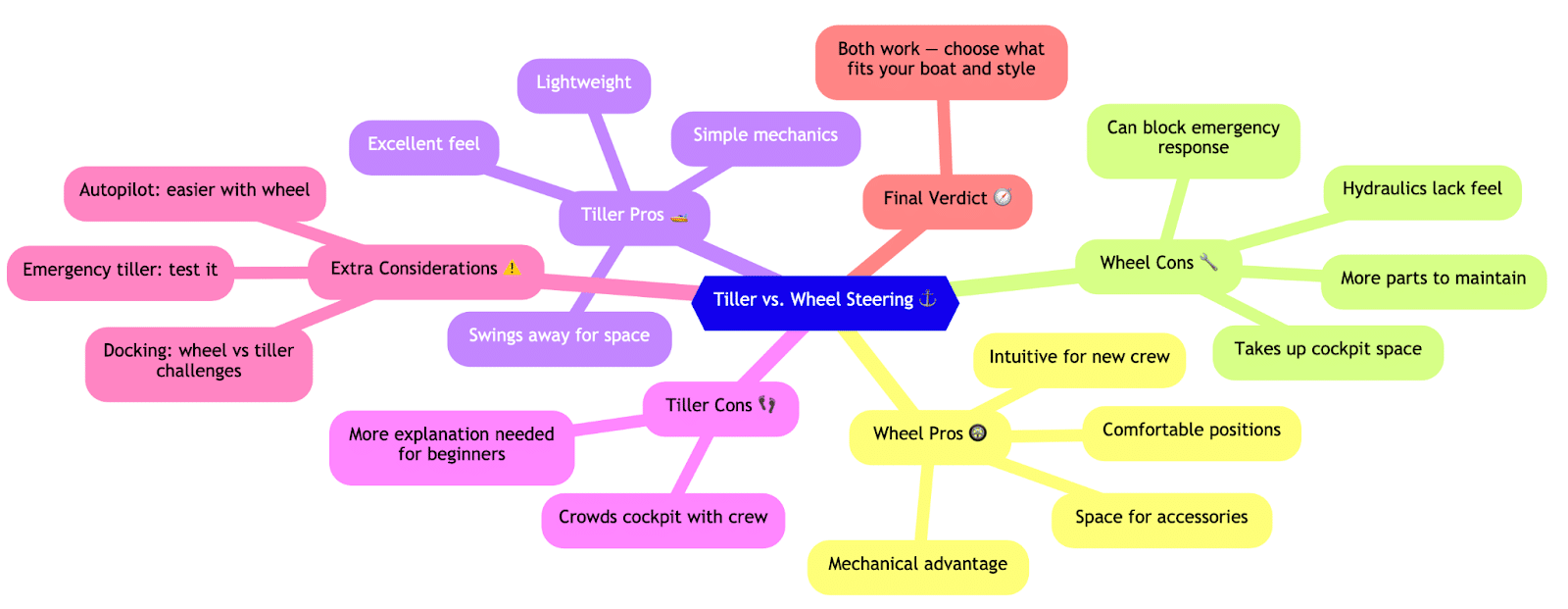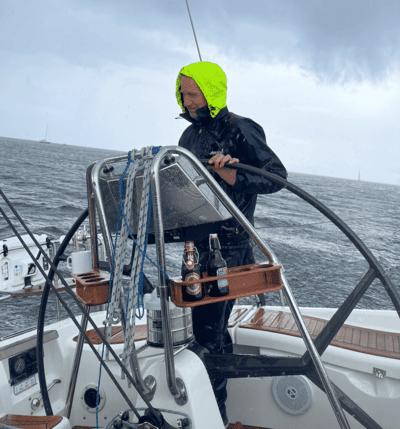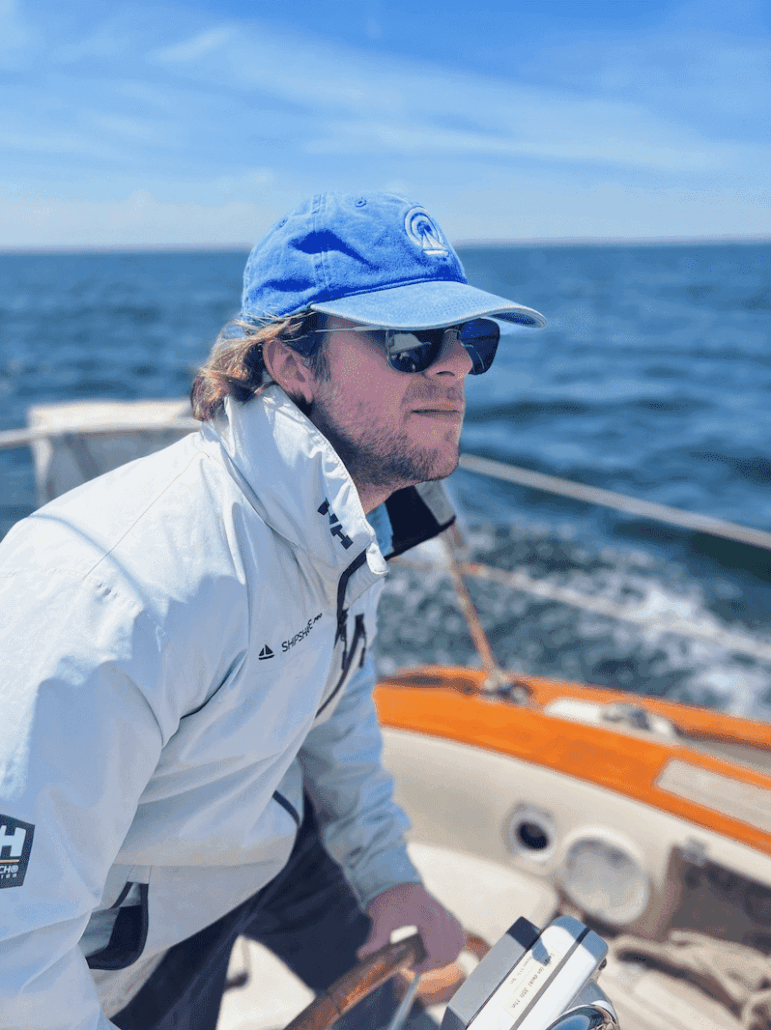Sign up with NauticEd for FREE (no obligation) and receive 2 free boating courses, a free eLogbook and boating resume, and more! If you want to get started in boating or are experienced and want to expand your knowledge and skills, consider taking our many online sailing and powerboating courses.
Tiller vs. Wheel: The Real-World Take
Ask ten sailors whether they prefer a tiller or a wheel and you’ll get twelve answers, most of them emotional. But here’s the real breakdown—pulled straight from lived experience, hard lessons, and a few cramped lazarettes.
I Sail a 40-Footer with a Wheel
Let’s get this out of the way: yes, it eats up cockpit space. But I genuinely like it. I can stand and steer. I can sit behind it, to the side, whatever—basically the same positions I’d use with a tiller. Thanks to the mechanical advantage, it steers easily. And with the screw-on pedestal brake, I can dial in stiffness. That’s not just for comfort—it helps me avoid overcorrections when I’m trimmed up on a steady wind.
Bonus: the pedestal means I get real estate for fun stuff. Cup holders. iPad mounts. You name it. And let’s be honest—everyone wants that picture “behind the wheel.”
That said, space is the biggest tradeoff. I’m nimble enough to dance around it, but it does turn the cockpit into an obstacle course for guests. If someone inexperienced is at the helm and I have to jump in quickly, it’s a little awkward—more choreography than it should be.
Steering Feel and Maintenance
Despite what people say, I actually get decent feedback through my wheel. That’s mostly because of the short linkage. It’s responsive—very different from some of my friends’ 50-footers where you’re steering by faith alone. But there’s no denying the system adds complexity.
Chain and cable setups are relatively simple—until they’re not. I’ve done the emergency repairs, flashlight between my teeth, contorted into a hatch you didn’t know opened. It’s doable. But for most casual boaters, it’s just another mysterious marine system they don’t understand (and won’t inspect until it fails).
Hydraulics? That’s a whole different beast. Rare on smaller boats, and I’ve got no interest in troubleshooting one mid-passage. No helm feel, no predictability. When I’ve sailed boats with hydraulic steering, I’m relying on my feet for feedback.
Why I Chose a Wheel
A rookie crew. A wheel is intuitive. I can say “keep this course” and go manage the sails. With a tiller, there’s more explaining, more room for error. For me, this setup works.
But I miss the simplicity of a tiller. No linkages. Fewer failure points. Better feedback. You can swing it up and out of the way when you’re not using it—suddenly your whole cockpit is usable space again. Try that with a wheel.
Autopilot, Emergencies, and Other Considerations
Wheel boats make autopilot integration easier—especially if you’re using a solid underdeck unit. But here’s a tip for the wheel crowd: test your emergency tiller. Some designs are so poorly thought out you’ll need hours of disassembly before you can even steer again. If the chain snaps and you’re offshore, that’s not a great time to learn that your backup plan is buried under six lockers and three bolts.
On the other hand, tillers get crowded with crew. That’s their biggest flaw. As your cockpit fills up, someone’s always in the way. It’s manageable—until it isn’t. I’ve done dockings and landings where the tiller was a constant liability.
So, What’s Better?
If I were starting from scratch, knowing everything I know now, I’d still go with a wheel—even on a small boat. But that’s me. If you’re short-handed, like simplicity, or just want to feel the boat again, it’s hard to beat a tiller.
End of the day, both work. One just fits your needs and sailing style better. The other doesn’t. Until it does.
You can learn more with NauticEd

Sign up with NauticEd for FREE (no obligation) and receive 2 free boating courses, a free eLogbook and boating resume, and more! If you want to get started in boating or are experienced and want to expand your knowledge and skills, consider taking our many online sailing and powerboating courses.








